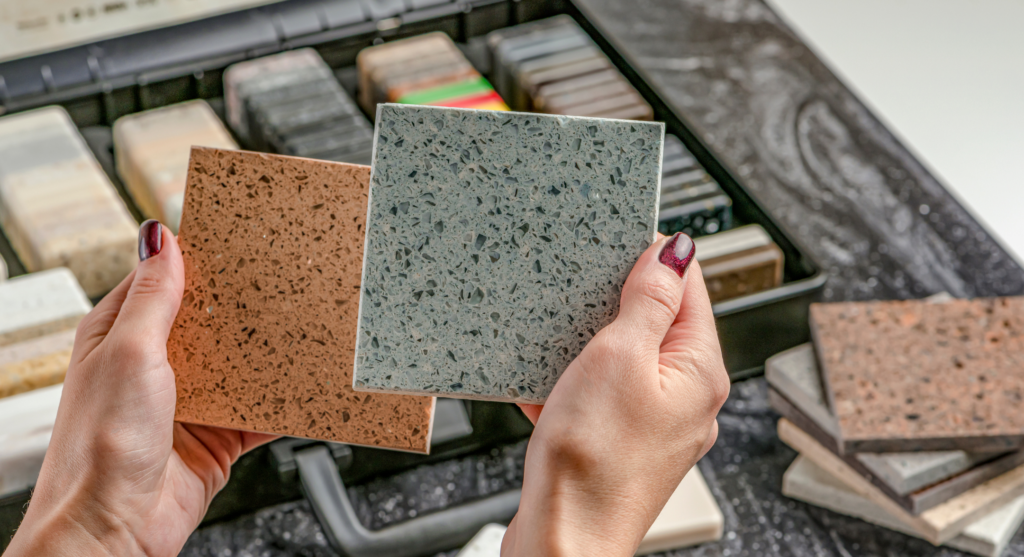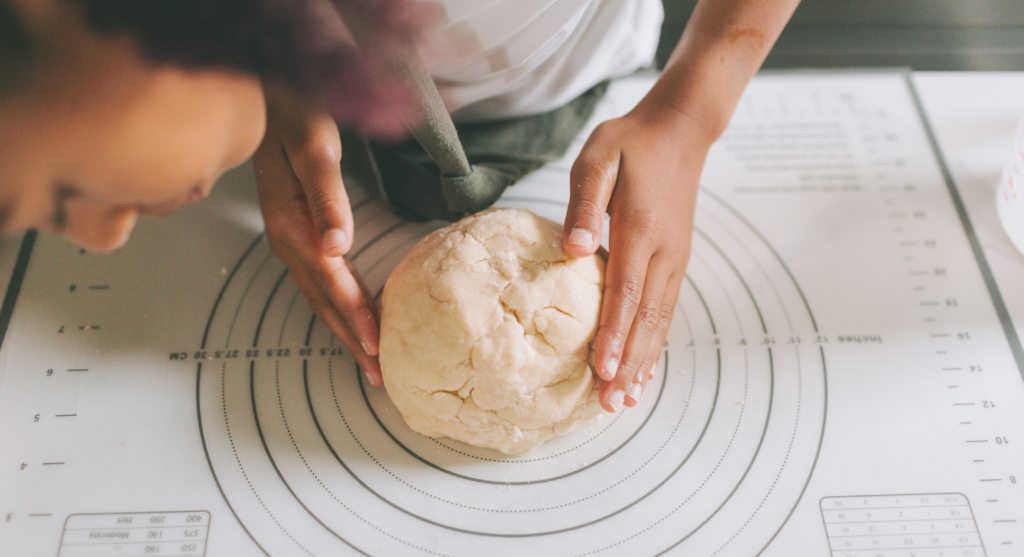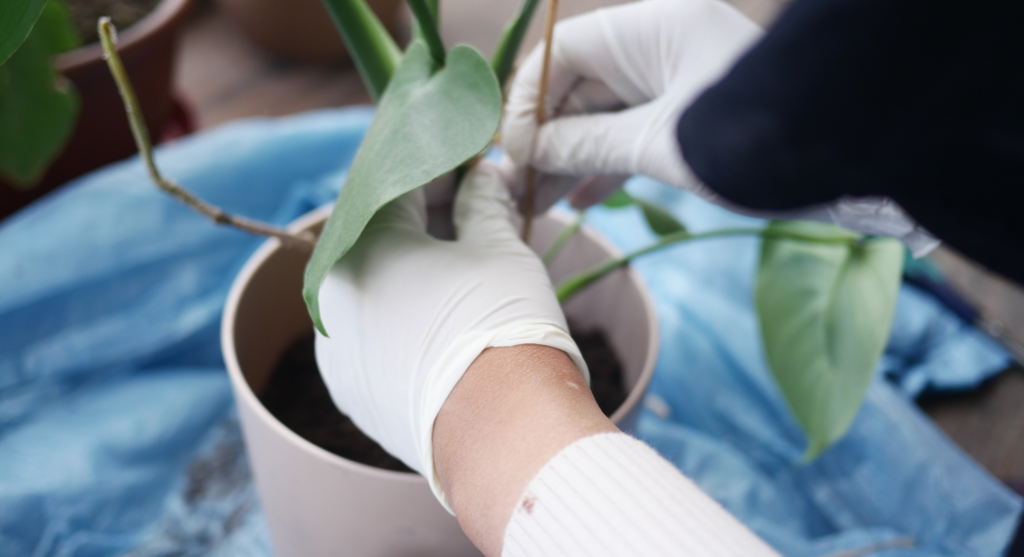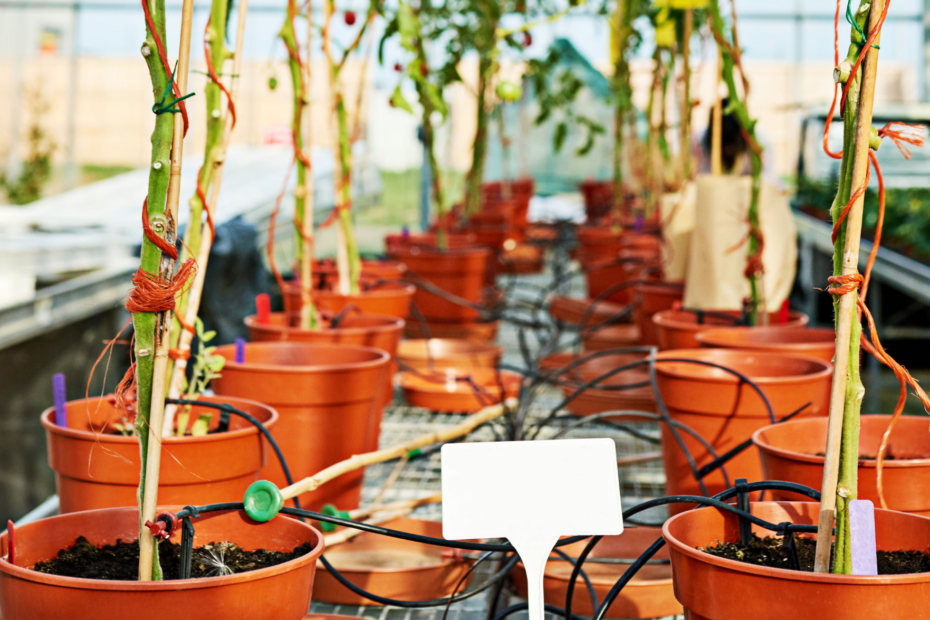Selecting the perfect pot is not merely an aesthetic choice—it is a fundamental component in ensuring your plant’s long-term health, growth, and overall well-being. A well-chosen pot provides essential features such as proper drainage, sufficient space for roots, and a material that complements your plant’s specific needs and your home’s decor. In this guide, we’ll delve into the various aspects of choosing the right container, discuss the pros and cons of different materials, and offer practical tips to help you create a thriving environment for your plants.
Understanding the Needs of Your Plant
Before you even consider the visual appeal of a pot, it is crucial to understand your plant’s requirements. Each plant species has unique needs that depend on factors like root structure, watering habits, and sunlight exposure. Researching your plant is the first step in selecting a pot that will support its specific growth patterns. Consider the following aspects:
Root Growth and Structure
- Shallow vs. Deep Roots: Some plants, such as succulents and many cacti, have relatively shallow root systems and do best in pots that are not too deep. In contrast, plants like ferns, orchids, or even some indoor trees have deeper roots and require a container that allows for ample vertical growth.
- Root Expansion: As plants mature, their roots require space to spread out. A pot that is too small can lead to root crowding, which may hinder nutrient uptake and overall growth. When in doubt, it is advisable to opt for a container that provides extra room for expansion.
Watering Habits and Moisture Needs
- Frequent vs. Infrequent Watering: Plants with high water demands, such as tropical species or ferns, need a pot with excellent drainage to avoid waterlogging and root rot. Conversely, plants that are drought-tolerant, like many succulents, benefit from containers that dry out quickly.
- Soil Composition: The type of soil used in a pot, combined with the pot’s material, can significantly affect moisture retention. Some materials hold water longer than others, impacting how often you need to water your plants.
Sunlight Exposure
- Heat Absorption: The color and material of your pot can affect the temperature around the plant’s roots. Dark-colored pots absorb more heat, which can be beneficial in cooler climates but might overheat the roots in warmer conditions. On the other hand, lighter colors reflect sunlight and help maintain a cooler root zone.
- UV Exposure: For outdoor plants, consider that certain materials may degrade under prolonged exposure to ultraviolet light. Choosing UV-resistant materials can extend the life of your pots.
Material Matters: Choosing the Right Pot Material
The material of the pot plays a significant role in the health of your plants. It affects moisture retention, insulation, durability, and overall aesthetics. Here we discuss several common materials, along with their advantages and disadvantages.

Clay or Terracotta Pots
Pros:
- Excellent Breathability: Clay and terracotta are porous, allowing air to reach the roots. This reduces the risk of overwatering and helps prevent fungal infections.
- Moisture Regulation: These pots naturally absorb excess water, creating a balanced moisture environment and preventing root rot.
- Timeless Aesthetic: With their earthy tones and classic design, clay pots often blend seamlessly into natural or rustic decor settings.
Cons:
- Drying Out Quickly: Due to their porosity, these pots may require more frequent watering, especially in dry climates.
- Fragility: Clay pots can break if dropped or subjected to sudden temperature changes, making them less suitable for outdoor environments where accidents are more common.
Plastic Pots
Pros:
- Lightweight and Affordable: Plastic pots are easy to handle and come in a wide variety of shapes, sizes, and colors. Their affordability makes them a popular choice for many gardeners.
- Moisture Retention: Unlike clay, plastic does not absorb water. This quality means that soil retains moisture longer, reducing the frequency of watering.
- Durability: Plastic pots are resistant to breakage and are ideal for both indoor and outdoor use, although they might degrade over time if constantly exposed to harsh sunlight.
Cons:
- Poor Breathability: The lack of porosity can lead to waterlogging if not managed with adequate drainage, which may cause root rot.
- Environmental Impact: Although inexpensive, plastic pots contribute to environmental waste if not recycled properly. However, many eco-friendly options are now available.
Ceramic or Glazed Pots
Pros:
- Stylish and Decorative: Ceramic pots often feature intricate designs and vibrant colors that can enhance any space. Their decorative appeal makes them a favorite for indoor plants.
- Moisture Management: Glazed surfaces help retain moisture, making them ideal for plants that require a consistent water supply.
- Stability: The heavy nature of ceramic makes these pots stable, which is beneficial for larger plants that might tip over in lighter containers.
Cons:
- Higher Cost: Ceramic pots tend to be more expensive than plastic or terracotta alternatives.
- Weight: Their heaviness can make them difficult to move, particularly if you need to rearrange your indoor garden or bring them indoors during cold weather.
Metal Pots
Pros:
- Modern Look: Metal pots offer a sleek, contemporary aesthetic that can suit modern interiors and exteriors.
- Durability: When properly maintained, metal pots can be very durable and long-lasting.
- Unique Finishes: They can be painted or treated to produce various finishes, from matte to glossy, enhancing the overall decor.
Cons:
- Heat Sensitivity: Metal conducts heat very well, meaning that in direct sunlight, the pot can become very hot, potentially damaging the roots.
- Rust Concerns: If not properly treated or maintained, metal pots can rust over time, especially in humid or wet environments.
Wooden Planters
Pros:
- Natural and Rustic Aesthetic: Wooden planters add warmth and a natural feel to your garden or home. They often blend seamlessly with outdoor landscapes.
- Insulation: Wood provides good insulation for the roots, maintaining a more constant temperature.
- Customization: Many wooden planters can be customized or painted, allowing you to create a unique look that suits your style.
Cons:
- Maintenance Needs: Wood is susceptible to rot, especially when constantly exposed to moisture. Regular treatment or sealing is required to prolong its life.
- Weight: Wooden planters are generally heavier, making them less practical for frequent relocation.
Drainage: A Crucial Factor
Regardless of the material, one of the most critical aspects of a good plant pot is its drainage capabilities. Poor drainage can lead to excess water retention, creating an environment ripe for root rot and fungal diseases.
Key Points for Proper Drainage
- Drainage Holes: Always ensure your pot has at least one drainage hole at the bottom. This allows excess water to escape and prevents water from pooling around the roots.
- Elevated Bases: Some pots come with built-in pot feet or require the use of a tray. Elevating the pot slightly ensures that water does not collect at the bottom.
- Supplementary Materials: For improved drainage, consider adding a layer of gravel or small stones at the bottom of the pot. This extra layer helps to separate the soil from standing water, although it should not replace a proper drainage hole.
Size and Shape: Finding the Right Fit
The size and shape of the pot can significantly affect your plant’s health. A container that is too small may constrain root growth, while an oversized pot can lead to water retention problems.
Considerations for Choosing the Right Size
- Young Plants: Small pots work well for seedlings or young plants, as they allow for manageable growth and easier repotting as the plant matures.
- Mature Plants: As plants grow, their root systems expand. Medium to large-sized pots provide ample space for roots to spread out, ensuring that the plant has sufficient nutrients and stability.
- Overpotting Issues: Using a pot that is too large can be detrimental. Excess soil holds more water, which may lead to prolonged wet conditions and potential root rot. Aim to choose a pot that fits the current size of the plant while allowing room for growth.

Shape Matters
- Round vs. Rectangular: While round pots are commonly used and work for most plants, rectangular or square pots can be more space-efficient, especially in indoor settings or when arranging multiple plants together.
- Depth vs. Width: Consider the balance between depth and width based on your plant’s growth pattern. Plants with deep roots will benefit from taller, deeper pots, while those with broad, shallow roots will do better in wider containers.
Matching the Pot to Your Home Decor
A well-chosen pot not only benefits your plant but can also enhance the overall aesthetic of your space. The style, color, and design of your pot should complement your home’s decor, creating a harmonious and inviting environment.
Tips for Aesthetic Coordination
- Color Coordination: Choose colors that either blend seamlessly with your decor or serve as a statement piece. Neutral tones such as beige, white, or gray can provide a subtle backdrop, while bold colors can energize and add personality to your space.
- Stylistic Themes: Consider the overall style of your home—whether modern, rustic, bohemian, or minimalist—and select pots that echo these themes. For example, sleek metal pots might be perfect for a contemporary living room, while terracotta may suit a more traditional or earthy setting.
- Mix and Match: Don’t be afraid to mix different pot styles to create visual interest. Grouping pots of varying heights and textures can create a dynamic and layered look that highlights both your plants and your personal style.
Indoor vs. Outdoor Considerations
When choosing a pot, the environment where your plant will reside plays a significant role in the decision-making process. Indoor and outdoor plants face different challenges, and selecting the right container can help mitigate these issues.
Indoor Plant Considerations
- Mobility: Indoor pots should be lightweight enough to allow for easy movement. This is particularly important if you need to reposition your plants to follow seasonal sunlight or to protect them during extreme weather conditions.
- Protecting Your Space: Indoor pots must include features that prevent water spillage, such as built-in saucers or the use of protective mats, to avoid damaging furniture and floors.
- Self-Watering Options: For busy households or for those who travel frequently, self-watering pots can be a convenient solution, ensuring that your plant receives a consistent supply of moisture.
Outdoor Plant Considerations
- Weather Resistance: Outdoor plants are exposed to rain, sun, and wind. Choosing pots made of weather-resistant materials like concrete, treated wood, or UV-protected plastics can help them withstand the elements.
- Stability: For outdoor settings, larger and heavier pots are ideal because they are less likely to tip over in strong winds.
- Seasonal Changes: Consider the seasonal requirements of both the plant and the pot. In colder climates, insulated or double-walled pots may help protect roots from frost.
Eco-Friendly and Sustainable Options
As environmental awareness grows, more gardeners are looking for sustainable alternatives when it comes to choosing plant pots. Eco-friendly options are not only better for the planet but can also provide unique aesthetic qualities.
Sustainable Pot Choices
- Recycled Materials: Recycled plastic pots offer the same benefits as traditional plastic but are manufactured using repurposed materials, reducing overall plastic waste.
- Biodegradable Options: Pots made from coconut husk, bamboo, or peat are biodegradable. They break down naturally over time, allowing you to transfer your plant into the ground when it’s ready without worrying about waste.
- Upcycling: Think creatively about repurposing everyday items as plant containers. Old tins, wooden crates, or even decorative baskets can be transformed into charming and unique pots with a little DIY effort.
Additional Tips and Tricks
To help ensure your plants thrive, here are some extra tips to consider when selecting and using plant pots:
- Regular Repotting: As your plant grows, repotting is essential to prevent root-bound conditions. Choose a pot that offers extra space for the roots and repot every couple of years.
- Cleaning and Maintenance: Over time, pots—especially those used outdoors—can accumulate dirt, salt deposits, and algae. Regular cleaning not only improves their appearance but also prevents potential plant diseases.
- Drainage Check: Always test your pot’s drainage before planting. Pour water into the empty pot to ensure it flows freely through the drainage holes. If water stagnates, consider drilling additional holes or choosing a different container.
- Weight and Stability: For taller plants or those with top-heavy canopies, consider adding a layer of sand or small pebbles at the bottom of the pot to increase its stability.
- Self-Watering Systems: In addition to self-watering pots, you can use simple DIY systems such as placing a water reservoir beneath the pot or using capillary mats to help maintain consistent soil moisture.
Maintenance and Care for Your Pots
Once you have chosen the perfect pot, proper maintenance will extend its lifespan and continue to provide a healthy environment for your plants.

Seasonal Maintenance
- Indoor Pots: Regularly check for dust buildup, which can block drainage holes. A quick rinse with water can often suffice to clean the pot and refresh its appearance.
- Outdoor Pots: Depending on your climate, you may need to store pots indoors during harsh winter months or apply a protective sealant to guard against weathering. Inspect metal pots periodically for signs of rust and treat them as necessary.
Repair and Upcycling
If a favorite pot becomes damaged, consider repairing it rather than discarding it. Cracked terracotta can sometimes be mended with outdoor epoxy, and chipped ceramic pieces may be repurposed in creative garden projects. Upcycling old pots by painting them or adding decorative elements can give them new life and enhance your garden’s overall charm.
Conclusion
Selecting the right pot for your plants involves a balance between aesthetics, functionality, and understanding the specific needs of your plant. From the essential factors of drainage and size to the nuanced differences in materials, each choice plays a critical role in your plant’s growth and survival. By carefully considering the plant’s root structure, watering habits, and exposure to sunlight, you can make an informed decision that enhances both the health of your plant and the visual appeal of your space.
Whether you opt for the classic charm of terracotta, the durability and versatility of plastic, or the stylish statement of ceramic, there is no one-size-fits-all solution. Each material offers unique benefits and potential drawbacks, so aligning your choice with the environmental conditions and the specific care needs of your plants is key.
Moreover, the design and placement of your pots can significantly affect your living or work environment. A well-coordinated arrangement of indoor pots can transform a room into a vibrant, green oasis, while thoughtfully chosen outdoor planters contribute to a cohesive landscape design. With eco-friendly options and creative upcycling ideas, you can also maintain a sustainable gardening practice that benefits both your plants and the environment.
In summary, the right pot is much more than a container—it is an integral component of your plant care routine. From ensuring adequate drainage and providing the right space for roots to grow, to matching your decor and choosing sustainable options, every decision adds up to a healthier, more beautiful garden. By taking the time to understand and implement these guidelines, you are setting the stage for flourishing plants and a more inviting space that truly feels like home.
Você encontrou o vaso perfeito para suas plantas? Quais desafios ou sucessos únicos você experimentou em sua jornada de jardinagem? Compartilhe seus pensamentos e participe da conversa nos comentários abaixo. Plantio feliz!

